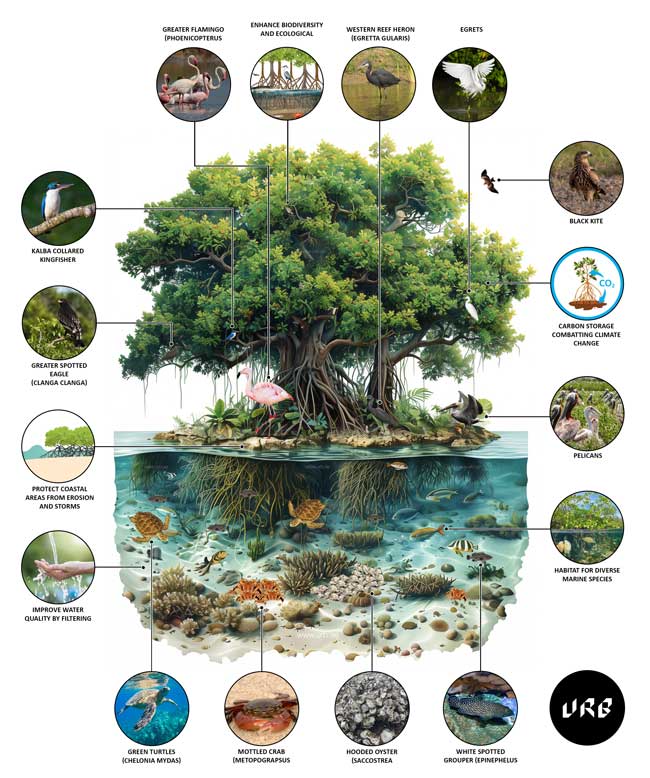Why Mangroves Are Essential for Biodiversity
Mangroves are extraordinary ecosystems that bridge land and sea, providing invaluable benefits to both. Often overshadowed by other forests, these coastal guardians are biodiversity hotspots, supporting a wide array of life forms and maintaining the balance of natural ecosystems. Mangrove forests are essential not just for their aesthetic value but for their critical role in conserving biodiversity. Protecting and restoring these ecosystems ensures the survival of countless species and bolsters ecological resilience.
"Mangroves are not just trees but thriving communities where biodiversity flourishes, forming the backbone of coastal and marine ecosystems."
- Dr. Richard Conniff Environmental Journalist
How Mangroves Sustain Biodiversity ?
Mangroves play a vital role in sustaining biodiversity by providing habitats, food, and protection to countless species. Here’s how they support life:
--> Nursery Grounds: Mangroves act as nurseries for many marine species. Juvenile fish, shrimp, and crabs find shelter within their intricate root systems, safe from predators.
--> Habitat Diversity: These ecosystems host a range of habitats – from submerged roots for aquatic life to forest canopies for birds and land animals, fostering diverse ecosystems.
--> Nutrient Cycling: Mangroves recycle organic matter, supporting the food web by providing nutrients for microorganisms, which in turn sustain larger species.
--> Breeding and Nesting Areas: Birds, reptiles, and mammals rely on mangroves for nesting and breeding, making these forests essential for their reproductive cycles.
--> Migration Stopovers: Migratory birds use mangroves as critical rest and feeding points, ensuring their survival during long journeys.
Mangroves' ability to support biodiversity is unmatched, creating thriving ecosystems that are indispensable for the planet's health.
How Mangroves Drive Ecosystem Connectivity ?
Mangroves are not just standalone ecosystems; they serve as vital connectors between land, sea, and freshwater systems, enhancing biodiversity in unique ways:
Linking Ecosystems: Mangroves act as a transition zone between terrestrial forests, seagrass meadows, and coral reefs. Species that inhabit these different ecosystems use mangroves as migratory pathways, creating a network of interconnected habitats.
Facilitating Fish Migration: Many fish species rely on mangroves as stepping stones during different life stages, moving from freshwater streams to mangroves and eventually to open oceans.
Cross-Habitat Nutrient Exchange: Mangroves contribute organic matter that is carried to neighboring ecosystems like coral reefs and seagrass beds, enriching their productivity and sustaining a variety of marine life.
Pollinator Pathways: Mangrove flowers attract bees, birds, and other pollinators, which also benefit adjacent agricultural or forested areas, supporting wider biodiversity.
Genetic Diversity Hotspot: The genetic intermingling of species across connected habitats ensures healthier, more resilient populations, critical for adapting to environmental changes.
Mangroves' ability to connect diverse ecosystems makes them indispensable for maintaining ecological harmony and ensuring the survival of countless interdependent species.
Tags :
Share :
3 Replies to “Why Mangroves Are Essential for Biodiversity”
Sharvari KokaneReply
November 22, 2024 at 9:26 am
Something I never really thought about before, but now it makes alot of sense. Thank you so much


